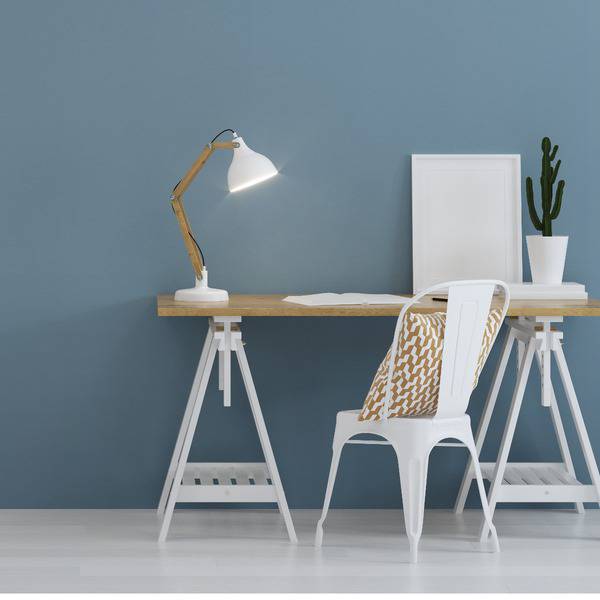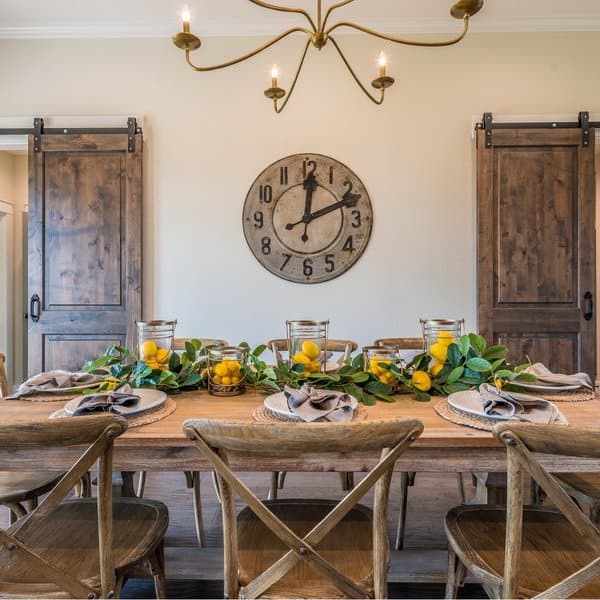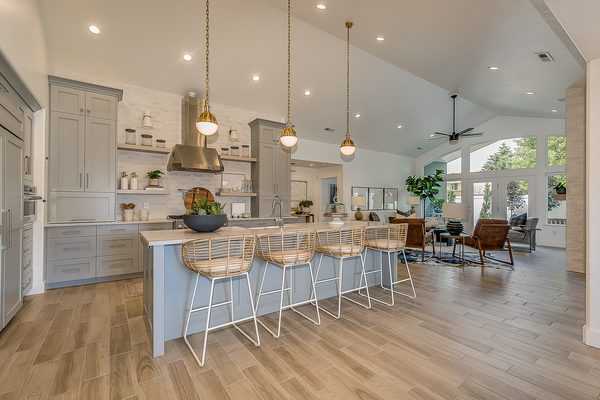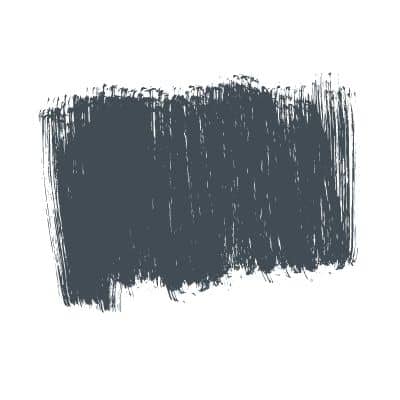Farror and Ball Stiffkey Blue: A color review
Blue paint colors will always be in style and classic, as they simply go with everything and complement a wide variety of decor aesthetics.
Recently dark blues and even blue-black paint colors have been pushing lighter blues out of the spotlight, and Farrow and Ball Stiffkey Blue is certainly not one to shy away from center stage.
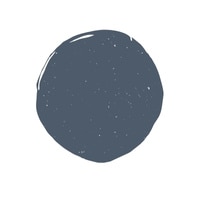
What color is Stiffkey Blue?
Like some other popular dark blue paint colors, Stiffkey Blue is a deep blue, and is best described as an “inky blue.” This definitely isn’t a color for someone who just wants a blue, as this is very dark and dramatic.
What goes well with Farrow & Ball Stiffkey Blue?
Stiffkey Blue works well with a wide variety of colors, so you really can’t go wrong. Although Blue will mesh well with tons of shades, I’m pretty partial to this color palette:
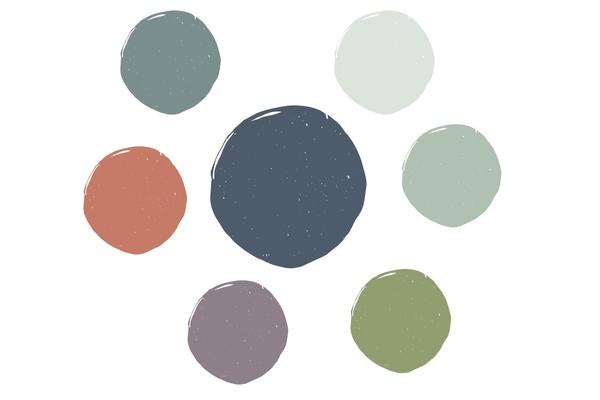
Starting at one o’clock and moving clockwise you’ll see Borrowed Light, Teresa’s Green, Yeabridge Green, Brassica, Red Earth, Oval Room Blue, all by Farrow and Ball.
Use these paint swatches as jumping off points when designing a room around Stiffkey Blue.
Think of how you can pull these colors (just pick 3 and repeat around the room in various sizes for a cohesive look)in with a rug, throw pillows, drapery, artwork, furniture and accessories.
Beyond these colors, Stiffkey Blue also looks amazing when paired with Ochre tones. Just look how beautiful this ochre throw pillow looks with the dark blue paint color.
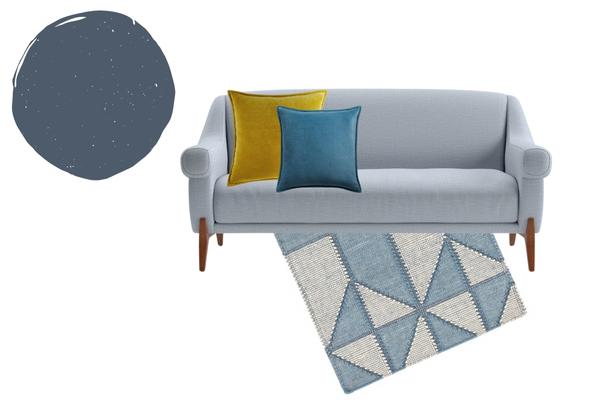
Stiffkey Blue pairs really well with bluish green hues, too. If you need some more inspiration check out my Palladian blue color combinations.
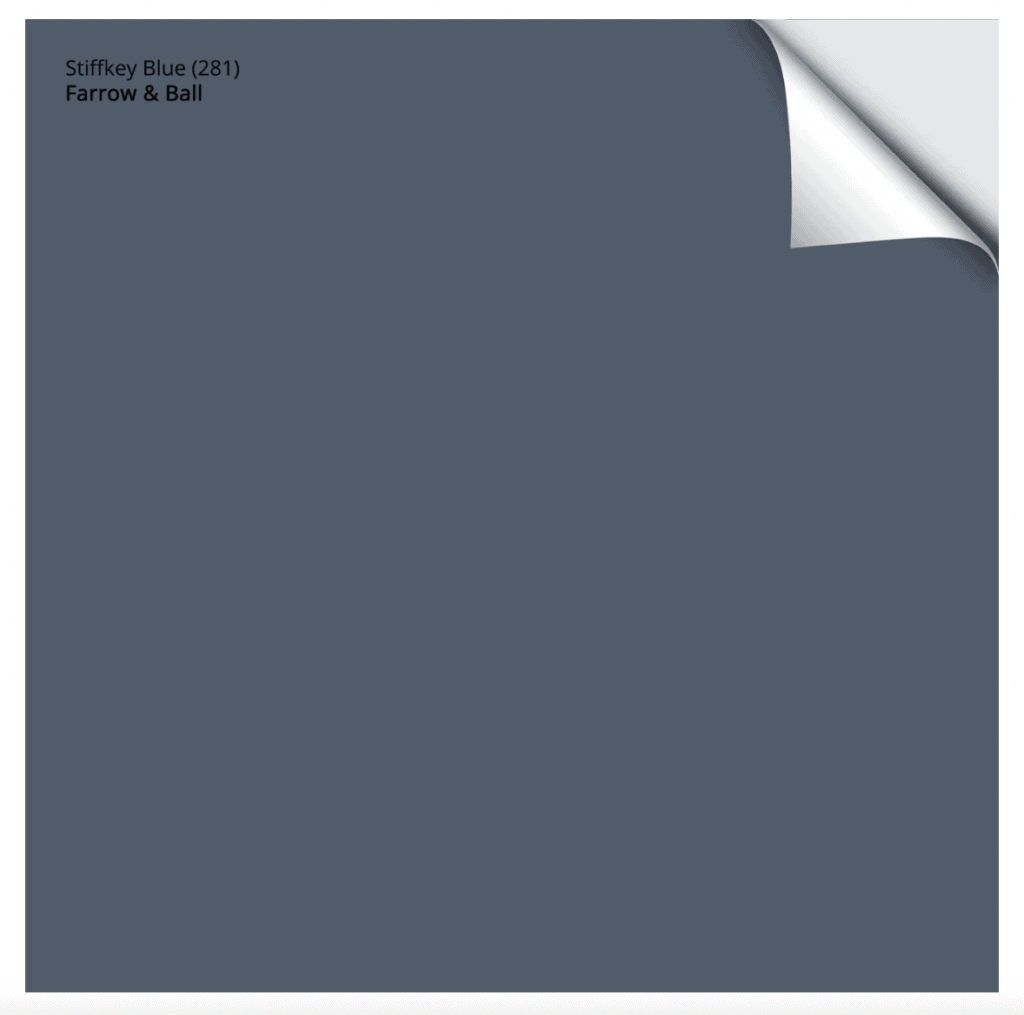
Order a sample of Stiffkey Blue
Hague Blue vs. Stiffkey Blue
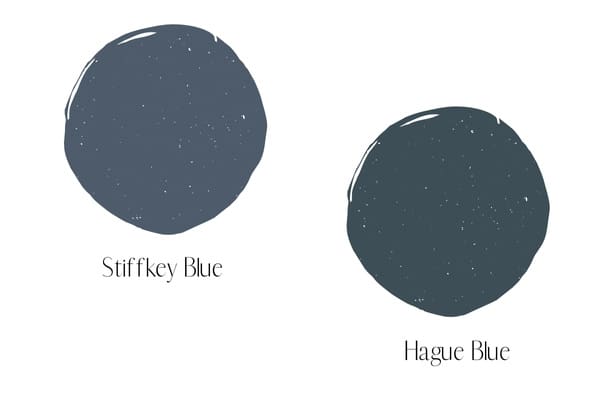
Stiffkey Blue and Hague Blue are two very popular Farrow and Ball blue paint colors, but there are some fairly big differences so if you’re deciding between the two hues, pay attention!
Unlike Stiffkey Blue, Hague Blue has some green in it, which gives it a bit more depth than Stiffkey Blue. Hague Blue is also darker, coming in at 7 on the light reflectance value (LRV) scale, while Stiffkey Blue is closer to a 10.
How to decide if Stiffkey Blue is right for you
Now comes the hard part, deciding if Stiffkey Blue is right for you (hey, that rhymes!) As a true color expert providing advice to homeowners all over, here are my three best tips when making a paint decision like this.
#1 Pay attention to your surrounding decor
Paint color should always be chosen last. I cringe when homeowners reach out to me to pick paint colors for their new build or house before they’ve furnished and decorated the space.
You’ll never be happy with even the prettiest of colors if you go about choosing paint colors this way.
Even though I mentioned that blue goes with everything, and I stand by that, you don’t want your paint color to be an afterthought, but rather the hue on the walls should be the cherry on top.
Pick out your color palette for your room by using a rug, drapery or even a colorful throw pillow first. Next you’ll pull the entire room together and then you’ll finish up by choosing a wall color that perfectly finishes off your decor.
I know this is completely opposite of what everyone does, but if you start choosing paint colors this way you’ll never make a mistake.
For example, you may find that instead of a deep inky blue, your decor would be better supported by a deep blue green and if you’ve already chosen the wall color you’re left living with it or changing it or the decor to work better.
#2 Understand how dark Stiffkey Blue really is
Stiffkey Blue is an extremely pigmented paint color. If you really like the navy blue but have a room with a small window opposite the sun, you’ll likely get something that reads more like a black blue color.
You’ll likely have to find something considerably lighter if you want your room to read navy blue if you only have a minimal amount of natural light.
The same is true on the opposite end, if you have too much natural light, this inky blue could read too light for your liking and you then you might need a bluish black tone.
#3 Test out multiple colors
Here’s where you can really go wrong. Make sure you test paint colors before you commit. Never use an inspiration photo as a “test,” without recreating the test at home first.
Photos online have been altered and you also have no idea the natural light coming into the rooms in the photograph, either.
I’m a big fan of the peel and stick paint swatches. And I don’t just order one color, but rather several. If you think you want Stiffkey Blue, order colors lighter and darker and then throw in some darker blue greens and maybe even blue purples, too.
Comparing colors to each other really helps you to narrow down the color for your space.
Once you get the the samples, place them on white poster board, leaving a 1-2 inch boarder of white all the way around and then place on the wall.
Don’t put samples right onto the wall, as without the true white color around the samples, you’ll be hard pressed to really see the sample color for what it really is.
Stiffkey Blue dupes

I get it, Farrow & Ball’s paint can quickly add up. If you love Stiffkey Blue but don’t love the price tag, check out Ben Moore Van Deusen Blue. It’s not an exact match of course, but it is pretty darn close.
You might also check out Hale Navy, too. It’s a little bit darker than Stiffkey Blue, but it’s got that inky blue hue.
Is Stiffkey Blue the color for you? If not, browse some of my other favorite navy paint colors.

